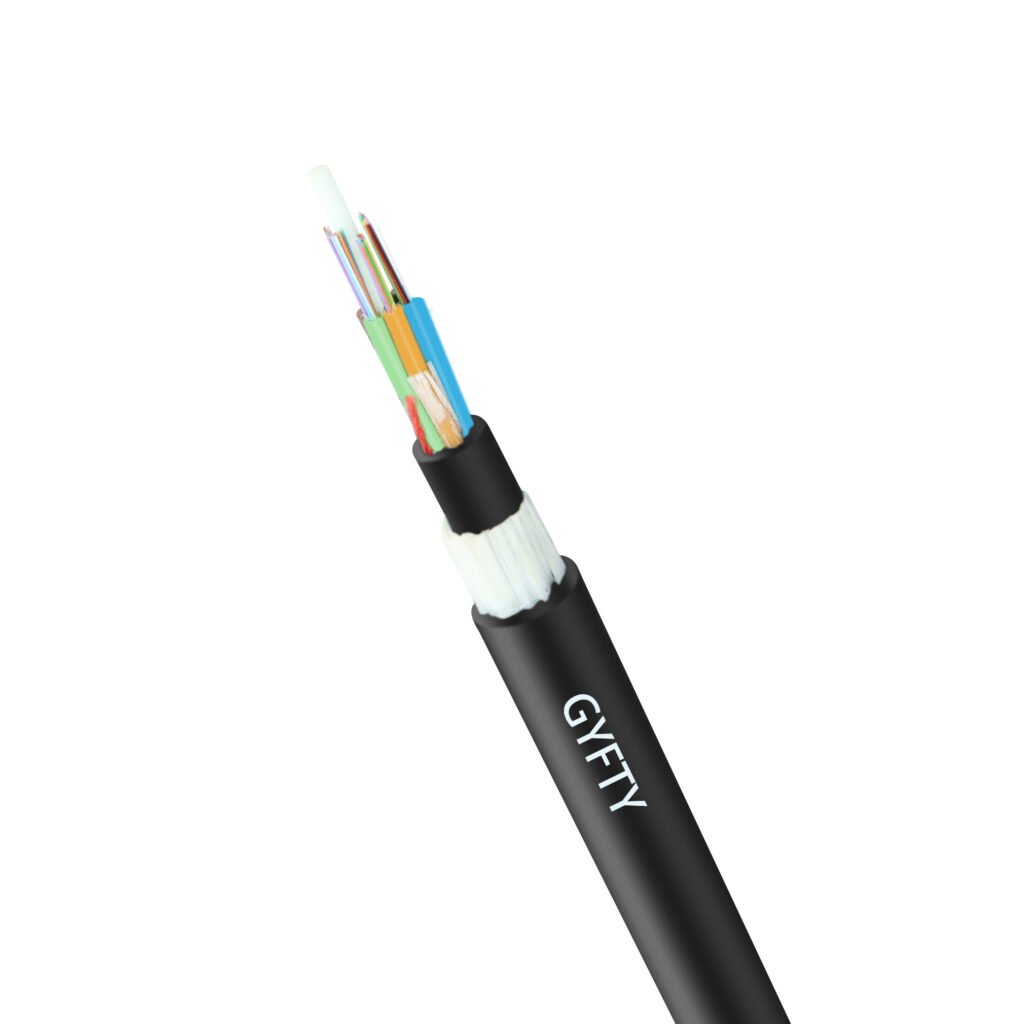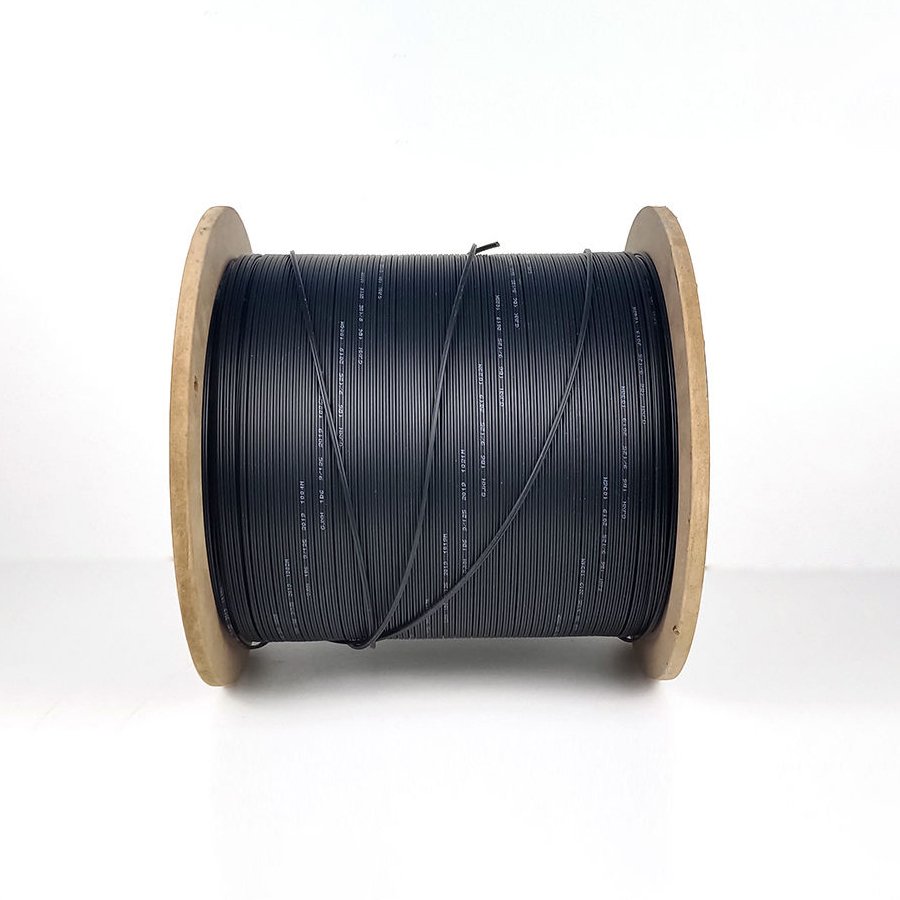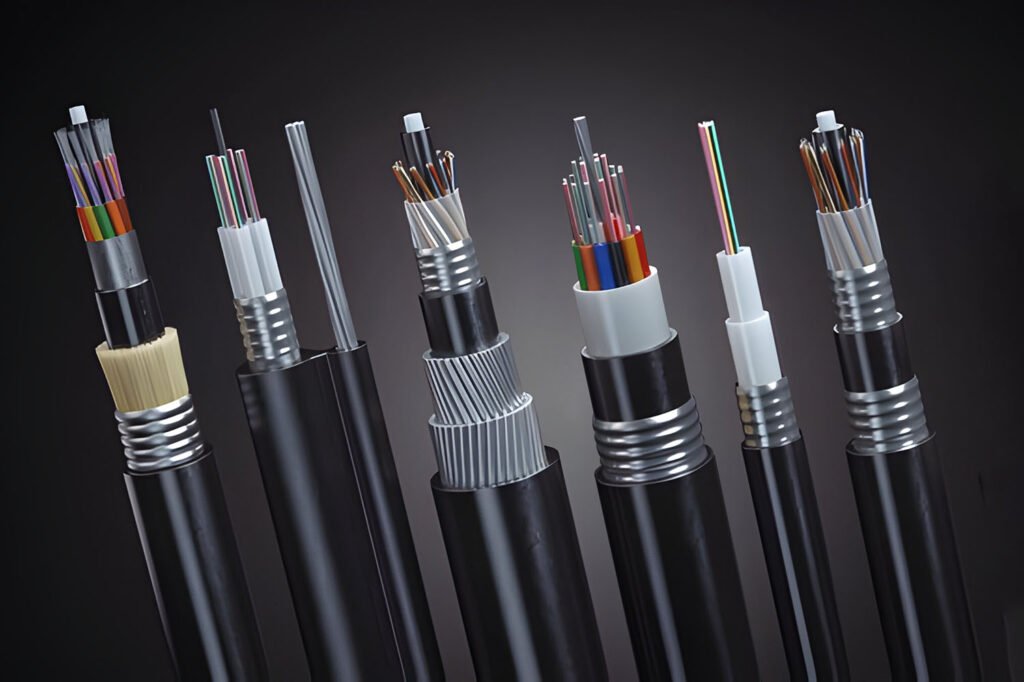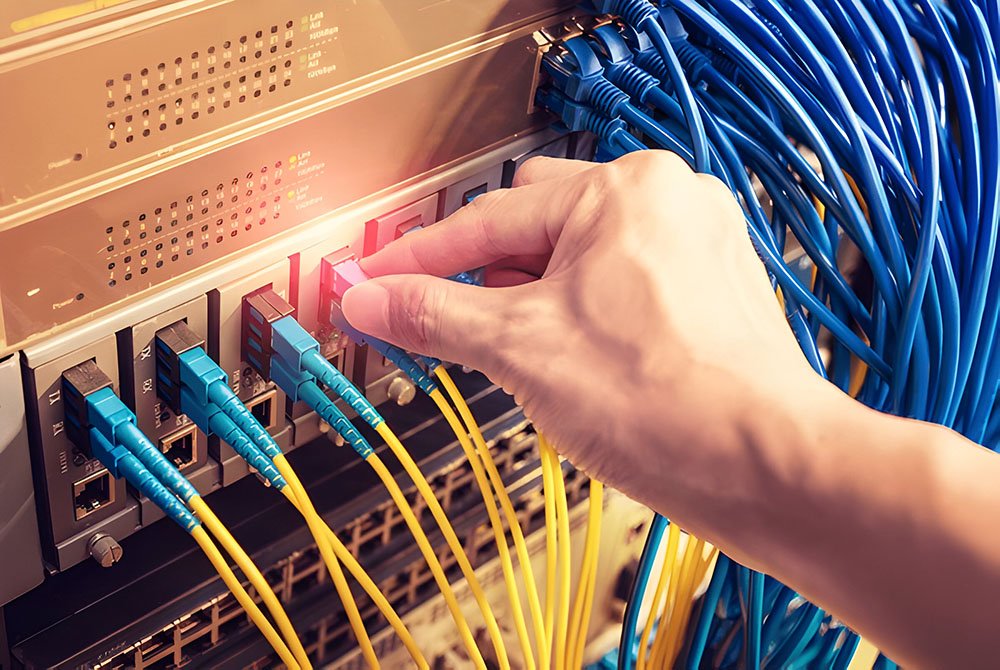Have you ever thought about what keeps your internet running smoothly, even in emergencies like a fire? The answer might be an LSZH cable, a special type of fiber optic cable designed with safety in mind. LSZH cable, short for Low Smoke Zero Halogen, is a game-changer in fiber optic technology, offering protection not just for data but also for people in critical situations. In this beginner-friendly guide, we’ll dive deep into what an LSZH cable is, exploring its features, applications, benefits, and why it’s a top choice for safety-focused environments. We’ll keep it simple and engaging, so you can understand the role of LSZH cables in keeping us connected—and safe.
What Is an LSZH Cable?
Defining LSZH Cable
An LSZH cable is a type of fiber optic cable with a jacket made from low smoke zero halogen materials. Unlike traditional cables that might use PVC (polyvinyl chloride) for their outer layer, an LSZH cable is designed to emit minimal smoke and no toxic halogen gases when exposed to fire. This makes LSZH cables a safer option in fiber optic technology for environments where fire safety is a priority, ensuring both connectivity and protection.
The Role of Low Smoke Zero Halogen Materials
The low smoke zero halogen materials in an LSZH cable are specially formulated compounds, often based on polyolefins, that reduce harmful emissions during combustion. Halogens like chlorine, found in PVC, can release toxic gases when burned, posing health risks. By using low smoke zero halogen materials, an LSZH cable minimizes these dangers, making it a key player in fiber optic technology for safety-critical applications.

How LSZH Cables Fit into Fiber Optic Technology
In fiber optic technology, LSZH cables are used to transmit data via light signals, just like other fiber optic cables, but with an added focus on safety. They can be either single mode or multimode, supporting various applications from telecom to data centers. The LSZH cable ensures that fiber optic technology not only delivers high-speed connectivity but also prioritizes human safety in the event of a fire, making it a versatile and responsible choice.
Key Features of an LSZH Cable
Low Smoke Emission
One of the standout features of an LSZH cable is its low smoke emission. When exposed to fire, a low smoke zero halogen jacket produces significantly less smoke than traditional materials like PVC. This improves visibility in emergency situations, making LSZH cables a safer option in fiber optic technology for densely populated or enclosed spaces where evacuation might be challenging.
Zero Halogen Content
The low smoke zero halogen design of an LSZH cable means it contains no halogens, such as chlorine or bromine, which are common in other cable jackets. This eliminates the release of toxic gases during combustion, reducing health risks for people nearby. In fiber optic technology, this feature makes LSZH cables ideal for environments where air quality and safety are top priorities.
Fire Resistance and Safety Compliance
An LSZH cable is designed to meet strict fire safety standards, often complying with regulations like IEC 60332 for flame resistance. While not completely fireproof, the low smoke zero halogen materials in LSZH cables help slow the spread of flames, enhancing safety in fiber optic technology. This compliance ensures fiber optic cables can be used in regulated environments without compromising safety.

Applications of LSZH Cable in Fiber Optic Technology
Public Buildings and High-Occupancy Areas
LSZH cables are widely used in public buildings like schools, hospitals, and office complexes, where safety is a top concern. The low smoke zero halogen properties of an LSZH cable ensure that fiber optic cables in these spaces prioritize occupant safety, supporting fiber optic technology in delivering connectivity without compromising on fire safety standards.
Transportation Systems
In transportation systems like subways, trains, and airports, an LSZH cable is often the go-to choice. The low smoke zero halogen design of LSZH cables ensures minimal smoke and toxic emissions in confined spaces, making fiber optic technology safer for passengers and staff during emergencies, while maintaining reliable data transmission in fiber optic cables.
Data Centers and Confined Spaces
Data centers, with their high concentration of fiber optic cables, also benefit from LSZH cables. The low smoke zero halogen materials in an LSZH cable reduce risks in these confined, equipment-heavy environments, ensuring fiber optic technology supports high-speed data transfer while adhering to safety protocols in critical infrastructure.
Types of LSZH Cable
LSZH Fiber Optic Cable with Loose Tube Design
An LSZH cable with a loose tube design features optical fibers housed in protective tubes, often filled with water-blocking materials, and surrounded by a low smoke zero halogen jacket. This type of LSZH cable is suited for outdoor or mixed environments in fiber optic technology, providing both safety and environmental resistance for fiber optic cables.
LSZH Fiber Optic Cable with Tight Buffer Design
The tight buffer LSZH cable has fibers directly coated with a low smoke zero halogen layer, making it more flexible for indoor use. This design in fiber optic technology makes LSZH cables ideal for patch cords and short-run connections in confined spaces, ensuring safety and performance in fiber optic cables for office or data center settings.
Armored LSZH Fiber Optic Cable
An armored LSZH cable includes a low smoke zero halogen jacket with additional protective layers, such as steel or aluminum, to enhance durability. Used in rugged environments, this type of LSZH cable ensures fiber optic technology combines safety with physical protection for fiber optic cables, suitable for areas with potential mechanical stress.

Challenges and Considerations with LSZH Cable
Higher Cost Compared to Traditional Cables
One challenge with an LSZH cable is its higher cost compared to traditional PVC cables. The low smoke zero halogen materials used in LSZH cables are more expensive to produce, which can increase the overall budget for fiber optic technology projects. However, the safety benefits often outweigh the cost in high-risk environments.
Limited Flexibility in Some Designs
LSZH cables can be less flexible than PVC cables due to the properties of low smoke zero halogen materials, which may affect installation in tight spaces. This consideration in fiber optic technology means LSZH cables may require more careful planning for routing fiber optic cables in confined areas like office ceilings.
Compatibility with Existing Infrastructure
When integrating an LSZH cable into existing systems, compatibility with non-LSZH fiber optic cables may be an issue. Adapters or careful planning may be needed to ensure low smoke zero halogen cables work seamlessly in fiber optic technology, especially in mixed environments where safety standards vary.
LSZH Cable vs Traditional PVC Cable
Smoke and Toxicity Differences
In an LSZH cable vs PVC cable comparison, the LSZH cable produces far less smoke and no toxic halogen gases when burned, thanks to its low smoke zero halogen design. PVC cables, on the other hand, can release harmful smoke and gases, posing risks to health and safety in fire situations.
Fire Safety Performance
While both LSZH cables and PVC cables can be fire-resistant, an LSZH cable slows flame spread more effectively due to its low smoke zero halogen materials. This enhances fire safety, making LSZH cables a better choice for regulated or high-risk areas compared to traditional PVC cables.
Cost and Application Suitability
PVC cables are generally cheaper than LSZH cables, but they lack the safety features of low smoke zero halogen materials. An LSZH cable is more suitable for safety-critical applications, while PVC cables may suffice for less regulated environments, balancing cost and safety.
Comparison Table: LSZH Cable vs PVC Cable
To make the differences clearer, here’s a simple table comparing LSZH cable and PVC cable across key aspects:
| Aspect | LSZH Cable | PVC Cable |
| Smoke Emission | Low, improves visibility | High, reduces visibility |
| Toxicity | No toxic gases | Releases toxic gases |
| Fire Safety | Slows flame spread | May spread flames faster |
| Cost | Higher cost | Lower cost |
| Application | Safety-critical areas | Less regulated areas |
This table highlights why an LSZH cable is often chosen over PVC in fiber optic technology for safety-focused applications, while PVC might be preferred in less critical settings.
Choosing the Right LSZH Cable for Your Needs
Assessing Environmental Requirements
When selecting an LSZH cable, consider the environment—public spaces or confined areas may require a low smoke zero halogen design for safety. This ensures LSZH cables in fiber optic technology meet the specific safety needs of the installation site, protecting both people and fiber optic cables.
Evaluating Cable Design and Application
Choose between loose tube, tight buffer, or armored LSZH cables based on the application—outdoor, indoor, or rugged environments. This decision in fiber optic technology ensures the LSZH cable provides the right balance of safety and performance for fiber optic cables in your specific use case.
Balancing Cost and Safety Benefits
While an LSZH cable may cost more, its low smoke zero halogen benefits often justify the investment in high-risk areas. Weigh the safety advantages against budget constraints in fiber optic technology to determine if LSZH cables are the best choice for your fiber optic cables project.

Future Trends in LSZH Cable Design
Advances in Low Smoke Zero Halogen Materials
Future LSZH cables may benefit from improved low smoke zero halogen materials, offering better flexibility and lower costs. These advancements in fiber optic technology will make LSZH cables more accessible for a wider range of fiber optic cables applications, enhancing safety without compromising performance.
Integration with Smart Technologies
LSZH cables might integrate with smart technologies, such as sensors to monitor fire risks or cable health. This innovation in fiber optic technology could enhance the safety and maintenance of LSZH cables, ensuring fiber optic cables remain reliable in critical environments.
Wider Adoption in Fiber Optic Technology
As safety regulations tighten, LSZH cables are likely to see wider adoption across fiber optic technology. The growing demand for low smoke zero halogen solutions will drive their use in more industries, ensuring LSZH cables become a standard for fiber optic cables in safety-focused deployments.
Conclusion: Why LSZH Cable Matters in Fiber Optics
An LSZH cable might seem like just another fiber optic cable, but it’s a lifesaver in disguise—bringing safety to the forefront of connectivity. We’ve explored what an LSZH cable is, from its low smoke zero halogen design to its applications and benefits, showing how it enhances fiber optic technology in critical environments. Whether you’re setting up a network in a hospital, subway, or data center, LSZH cables offer the safety and reliability you need for fiber optic cables. With solutions from CommMesh, you can embrace fiber optic technology that prioritizes both performance and protection—stay connected, and stay safe!

